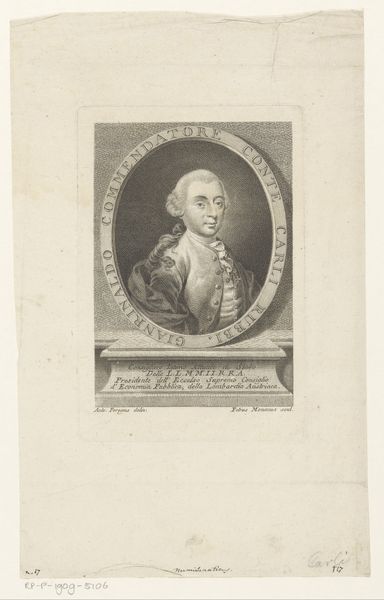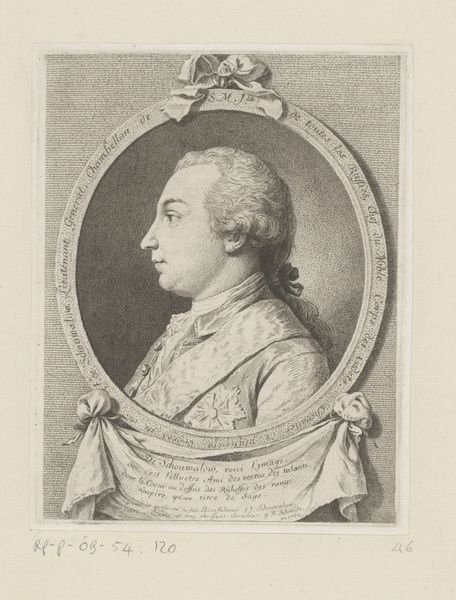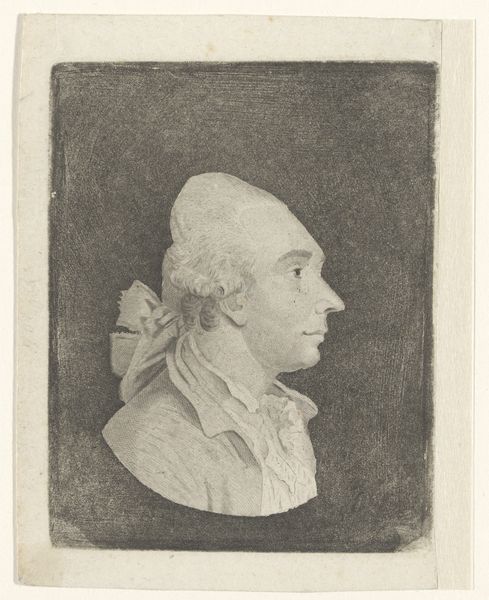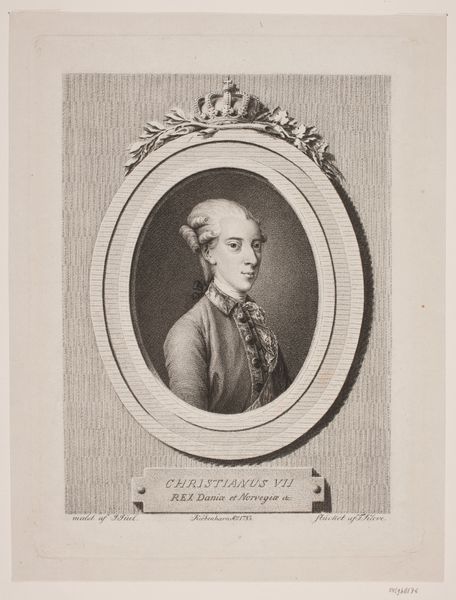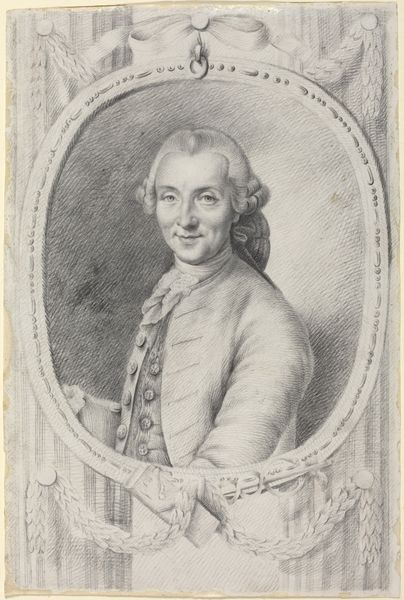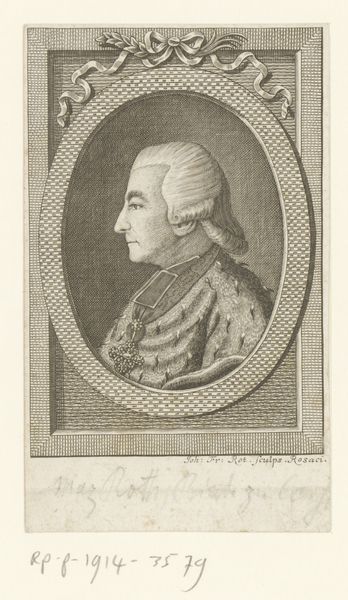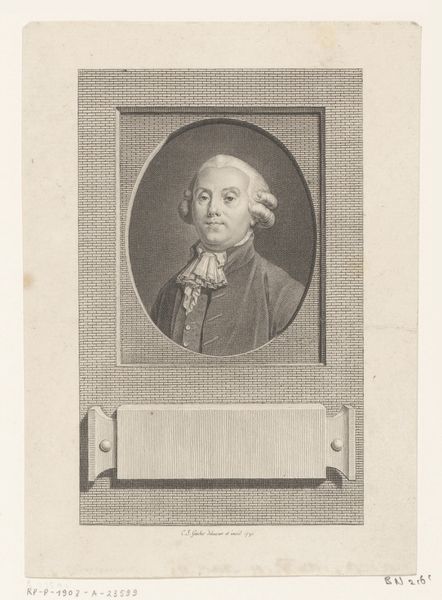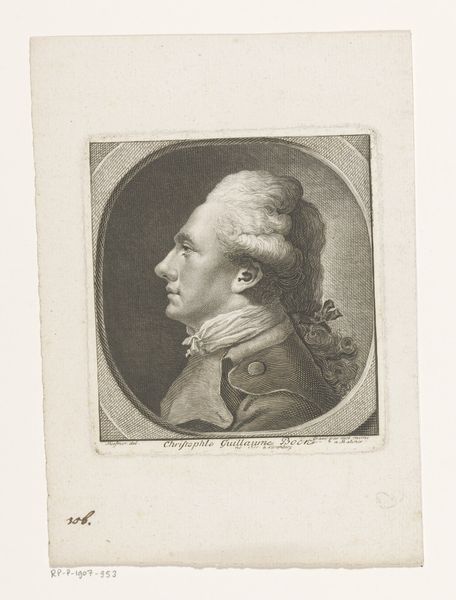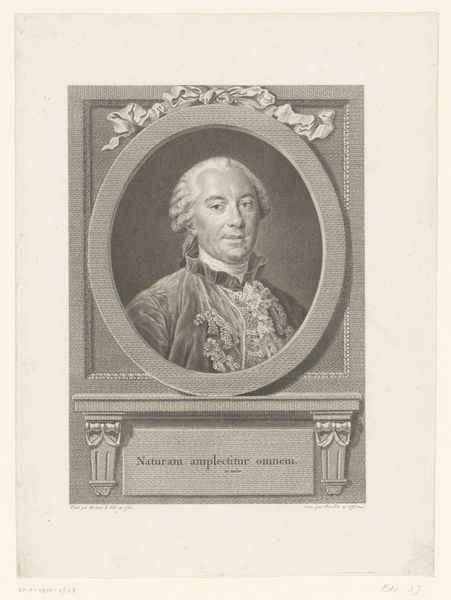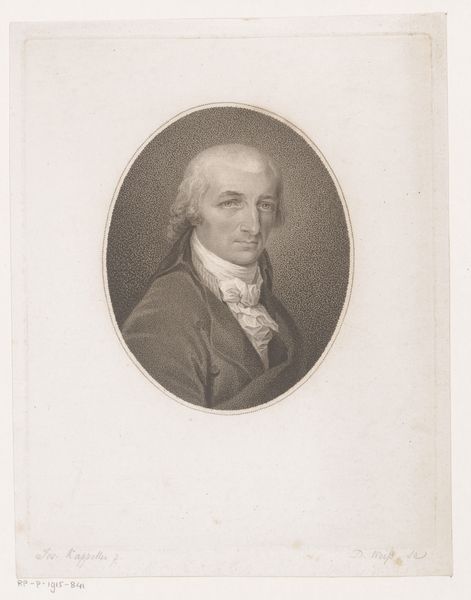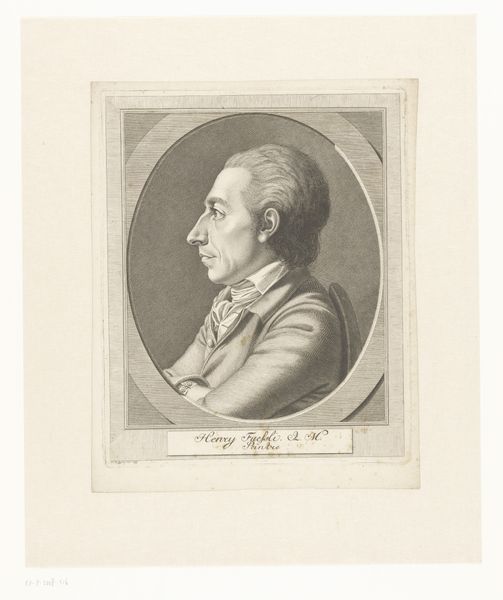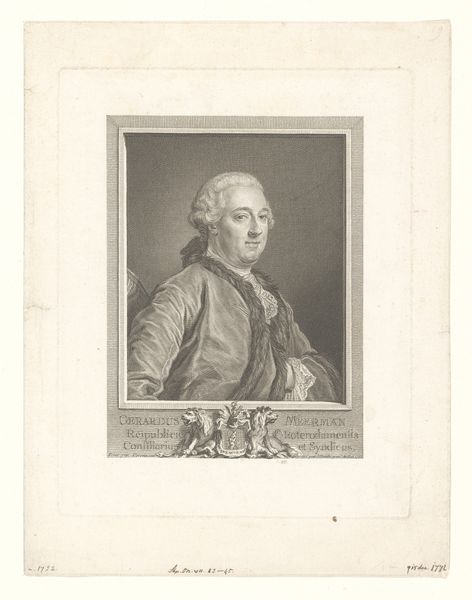
engraving
#
portrait
#
neoclacissism
#
old engraving style
#
portrait reference
#
classicism
#
limited contrast and shading
#
portrait drawing
#
engraving
Dimensions: height 227 mm, width 195 mm
Copyright: Rijks Museum: Open Domain
Editor: Here we have Heinrich Pfenninger's "Portret van Peter Balthasar von Muralt," created sometime between 1759 and 1815. It's an engraving. It's so clean and precise; the detail is amazing! What strikes you about it? Curator: The engraving gives us a fascinating insight into the power dynamics and social expectations of the time. Consider the subject, von Muralt, framed literally by the ribbon-tied oval – an emblem of the aristocratic class and its self-perception. How does his profile, with its controlled lines and rigid formality, speak to you about 18th-century ideals? Editor: It feels very... distant, I guess? Formal and a bit intimidating. Was this typical for portraits of the time? Curator: Precisely! It reflects the Enlightenment's emphasis on reason, order, and the public image. Think of the social hierarchies it reinforces. This wasn't simply about capturing a likeness. It was about projecting authority, virtue, and belonging to a privileged class. Notice how the technique – engraving – further contributes to this sense of controlled representation, unlike the looser styles associated with portraits of women, or even, sometimes, of non-nobility. Do you see the class markers that can be read in the details? Editor: Yes, the wig, the uniform, the… everything really! So, the engraving is not just a picture, it's a statement about social standing. Curator: Exactly. And understanding those statements is crucial to deconstructing the myths around power and privilege, which remain relevant today. This isn't just about art history, but about social history and contemporary critical theory too! Editor: That’s really insightful; I wouldn't have looked at it that way! Thank you! Curator: My pleasure. Remember, art is always in dialogue with its context, so we must question what we see and how we see.
Comments
No comments
Be the first to comment and join the conversation on the ultimate creative platform.
